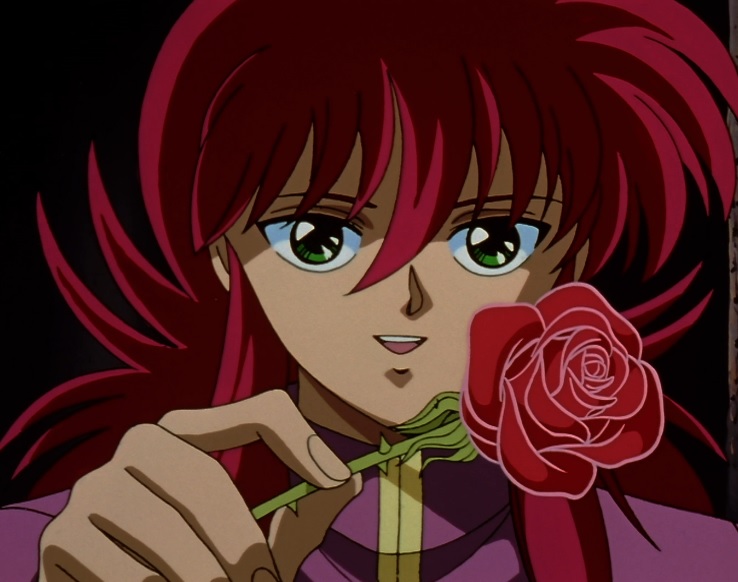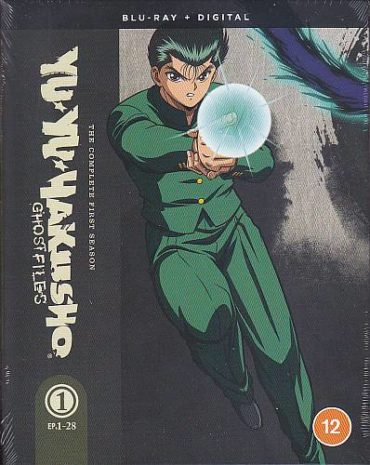Yu Yu Hakusho Season 1 Review
Many people complain about how things were better in the old days. Some of these complaints have merit, others not. However, watching this adaptation of a Shonen Jump classic from the early 1990s does invoke a feeling of: “Weren’t things better when an anime character could die in a fatal car crash, and not automatically wake up in a different world?”
This is what happens at the very start of Yu Yu Hakusho (or YuYu Hakusho, the spacing varies from place to place), an early manga by Hunter x Hunter creator Yoshihiro Togashi on which this anime is based. The story begins with our hero, delinquent Yusuke Urameshi, being killed in a car crash, but saving a young boy’s life in the process. However, he doesn’t find himself taken to some fantasy land – at least not immediately. No, he simply becomes a ghost.
He is informed of his predicament by a girl called Botan, who works as a guide across the River Sanzu if you watch the Japanese dub, or across the River Styx if you watch the English dub (there are several differences between the two translations), who flies witch-like by riding an oar. Yusuke was not meant to die in the way he did, doing such a good deed following a life of bad behaviour, meaning that neither Heaven nor Hell has a place for him. So Botan offers him the chance to come back to life. At first Yusuke turns her offer down, but after witnessing his own wake and seeing that there were some people who did care for him when he was alive, he takes up Botan’s offer.

Botan then takes Yusuke to the Spirit Realm/Spirit World known as Reikei. There he meets Koenma, the son of Yama (the judge of the dead in Buddhism), who gives Yusuke a series of tests to see if he can live correctly, which he manages to pass and finds himself restored to life. However, when he returns to his body, he finds that he has powers that allow him to spot demons living in the human realm, and so is able to capture demons that Botan can banish from the world of the living.
Yusuke is informed that, because of his new abilities, he is qualified and is given the job of Reikai Tantei – Spirit Realm Detective. He is allocated missions by Koenma, with Botan assisting him, to track down demons and yokai in the human realm, which can be returned and prevented from causing trouble. He gains extra abilities too, such as being able to concentrate spirit energy called Reiki at the point of his index finger and fire a “Rei-Gun”.
The series follows Yusuke and his friends, both human and supernatural, as he is tasked by Koenma to carry out various missions. One of these sees him tackling a trio of demons who have stolen objects from the spirit realm, but on a later mission, two of these demons work with him in an attempt to reduce their sentences after capture: these are fox demon Kurama, who fights with a “rose whip” which takes the form of a prickly rose stem; and the three-eyed, lightning-fast Hiei. They are also joined by one of Yusuke’s classmates, Kazuma Kuwabara, who is determined to beat Yusuke in a fight but never has done. His advanced sixth sense for the supernatural is helpful to the gang, and he is eventually able to use Reiki to make his own weapon, a “Rei-ken” sword.

While the supernatural elements of the series do make Yu Yu Hakusho interesting, this series is essentially your typical shonen battle story. Not long after Yusuke gets his new detective job, he is involved in a case where he has to travel to meet a martial arts master (or given the fact she’s female, perhaps “mistress” might be better), Genkai. He and Kuwabara find themselves in a tournament where the winner is given special training by Genkai. After all this, the main quartet begin working together on their first missions, and by the end of this collection of episodes, a new story arc begins with Yusuke, Kuwabara, Kurama, Hiei and Genkai taking part in the “Dark Tournament”, a martial arts contest against yokai that’s rather similar to Dragon Ball’s Strongest Under the Heavens Martial Arts Tournament (there is even a reference to Son Goku earlier on in the series). There are some interesting moments in this contest however. The first battle sees Kuwabara battling against someone who uses yoyos as weapons – something that Togashi uses again with Killua in Hunter x Hunter.
Because of this, Yu Yu Hakusho is a series that will appear to various fan groups: those who want to see what Togashi did before he became more well known for Hunter x Hunter, those who like battle series, and those interested in older titles. This is a rare example of an early 1990s series getting a UK release.
However, given the age of the show, there are some parts of it which have dated. One scene sees Yusuke’s alcoholic mother Atsuko drinking at a bar with some very obvious, badly shaven transvestites, which may make some viewers uncomfortable, along with a battle with one yokai who is in drag. Also somewhat jarring is one of the other participants in Genkai’s tournament, a man with ninja training who has a swastika tattooed on his bald head. No matter how many times you acknowledge the fact that the swastika is a Buddhist symbol, the character still looks too much like a racist skinhead.

Regarding production, out of the sub and the dub I would personally go for the sub because of the accuracy towards the original manga, with much of the content in the English dub being westernised, such as replacing the River Sanzu with the River Styx. Also, some of the performances in the English dub are not that great. The music is good however, with both the opening theme “Smile Bomb”, and the closing theme “The Homework Never Ends”, both performed by Matsuko Mawatari, being rather joyful pieces.
One perplexing thing about this collection however is the way Funimation have put it together. For starters, they call this 28-episode long collection “Season One”. This is inaccurate, as the first season is only 25 episodes long, the last three being the start of the “Dark Tournament” arc. The reason the collection appears to be 28 episodes long is because the entire series is 112 episodes long, which means it can be divided neatly into four collections of 28 episodes each. However, the most perplexing aspect of the collection is the inclusion of a fourth disc when it seems there is no need for it. The first two discs consist of ten episodes each; the third of the remaining eight episodes as well as textless opening, textless closing, and trailers for other Funimation titles (the collection also comes with a pair of art cards); the fourth disc consists of just one item – an 18-minute long feature about the series. It is shorter than an episode, but for some reason it has its own disc, rather than being included with all the other extras on the third disc, leading to the thought that if it had been possible to use fewer discs, using less materials would be better for the environment.
The first season has been an interesting watch, and while there are one or two things that stand out, it feels like future releases will give a better idea for the overall tone of Yu Yu Hakusho.


